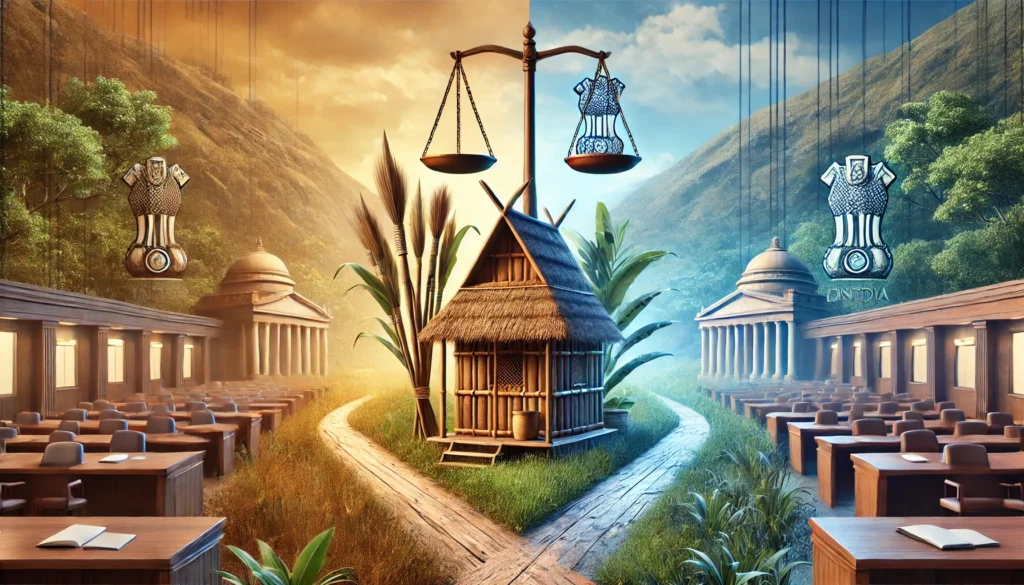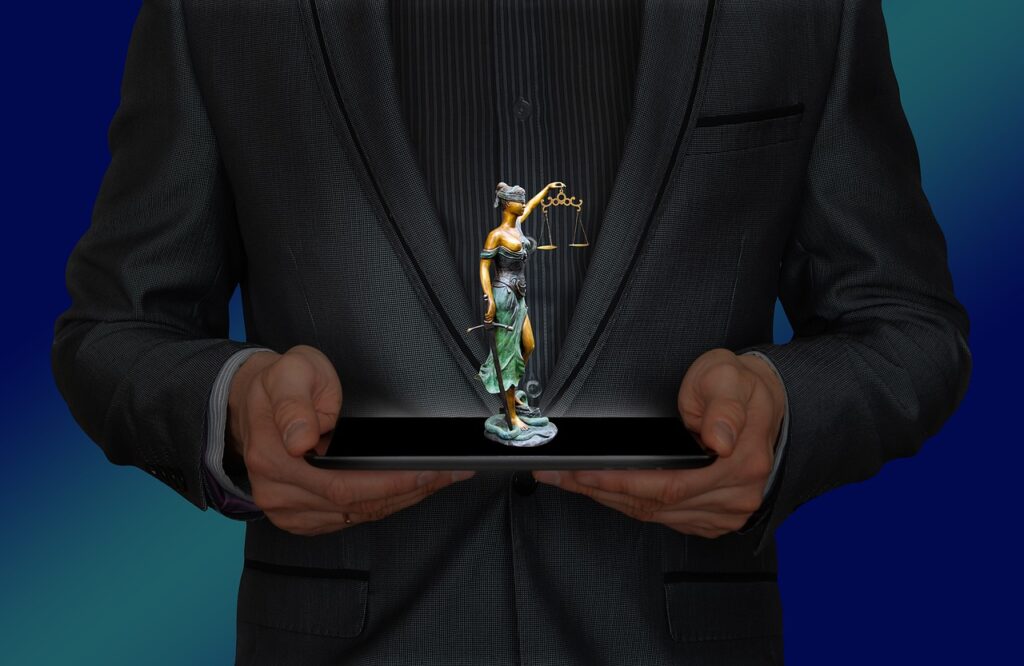Published On: 19th March, 2024
Authored By: Maithili S
SASTRA Deemed to be University, Thanjavur
-
ABSTRACT
In the digital era, online freedom of speech and expression in India stands as a vital pillar of democratic discourse, fostering open dialogue, civic engagement, and the exchange of diverse perspectives. However, this freedom faces numerous legal challenges and implications. Government censorship, surveillance practices, the spread of misinformation, and the proliferation of hate speech pose significant threats to the integrity of online discourse and democratic values.
This article navigates the complexities of balancing online freedom of speech with the need to mitigate its misuse. It explores legal frameworks, challenges, and implications surrounding online freedom in India, including concerns over content moderation, surveillance, and algorithmic biases. Drawing on research and case studies, the article examines the impact of online harassment, dissemination of misinformation, and propagation of hate speech on democratic participation and societal cohesion.
In conclusion, the article underscores the importance of fostering a culture of accountability, transparency, and mutual respect in digital interactions. It advocates for a multifaceted approach encompassing regulatory reforms, digital literacy initiatives, and technological innovations to uphold online freedom of speech while safeguarding democratic ideals in the digital age.
KEYWORDS: Freedom of speech and expression, Government censorship, Surveillance, harassment, hate speech
-
INTRODUCTION
In an era defined by digital connectivity, the internet has become a vital arena for the exercise of fundamental rights, including the freedom of speech and expression. In India, a country with a burgeoning online population, the concept of online freedom of speech and expression holds significant importance, reflecting the nation’s democratic ethos in the digital age. Online freedom of speech and expression encompasses the ability of individuals to express their opinions, ideas, and beliefs freely through digital platforms, unrestricted by governmental or corporate censorship. It encompasses a spectrum of activities, from social media discourse and political commentary to artistic expression and investigative journalism, all facilitated by the expansive reach and accessibility of the internet. The importance of online freedom of speech and expression in today’s world cannot be overstated. It serves as a cornerstone of democracy, fostering open dialogue, pluralism, and civic engagement in the public sphere. The digital landscape empowers individuals to participate in discussions on matters of public interest, challenge authority, and hold governments and institutions accountable for their actions.
However, as India grapples with the complexities of regulating online spaces, the landscape of online freedom of speech and expression faces numerous legal challenges and implications. From concerns over content moderation and surveillance to debates surrounding the balance between free speech and public order, navigating the contours of online freedom in India requires a nuanced understanding of constitutional principles, legal frameworks, and emerging digital technologies.
-
LEGAL FRAMEWORK IN INDIA
“To suppress free speech is a double wrong. It violates the rights of the hearer as well as those of the speaker.” – Frederick Douglass[1]
The right to freedom of opinion is intrinsically linked to the democratic principles outlined in the constitutional preamble of India. Enshrined as the first fundamental right in the Constitution of India, the freedom of speech and expression is protected under Article 19(1)(a). However, this right is subject to restrictions delineated in Article 19(2). The state is tasked with ensuring the protection of every citizen’s freedom of speech and expression unless it breaches the limitations outlined in Article 19(2). Should the exercise of this right surpass reasonable restrictions, the state reserves the authority to intervene.[2]
This fundamental right serves as the cornerstone for various other rights, including the right to freedom of opinion, the right to information, and the right to freedom of the press.
The Indian Penal Code (IPC) contains several provisions governing freedom of speech and expression. Notably[3]:
- Online content that incites opposition against the government may be charged with sedition under Section 124A.
- Content intended to instigate rioting is punishable under Section 153.
- Material that disrupts peace or promotes enmity between groups is recognized as a crime under Section 153A.
- Section 117 considers online content a crime if it induces the public or a group of people to commit an offense, punishable under Section 117.
- Section 504 regulates and penalizes online content designed to incite criminal acts or disturb public peace and harmony.
- Section 295A criminalizes online posts intended to outrage religious sentiments.
The Information Technology Act, of 2000, also contains provisions regulating online activities and controlling freedom of speech and expression. Section 66A once made individuals liable for posting offensive online content but was later deemed unconstitutional by the Supreme Court in the case of Shreya Singhal v. Union of India[4], as it violated Article 19(1)(a) and was not protected by Article 19(2).
Under Section 69A, the government has the authority to block or remove online content posing a threat to national security or devaluing the nation or its flag. However, Section 79 offers protection to social media platforms acting as intermediaries, provided they comply with requests to take down abusive online content.[5]
-
CHALLENGES TO ONLINE FREEDOM OF SPEECH
4.1. GOVERNMENT CENSORSHIP
As previously discussed, Section 69A of the Information Technology (IT) Act grants the central government the authority to instruct internet service providers to remove specific content or restrict access to certain websites in the interest of public welfare.[6] However, this legislative power is occasionally wielded by the government for political purposes, often to suppress contentious criticism that may require explanation.
The imposition of censorship on online platforms challenges the freedom of speech and expression, consequently impeding transparency by obstructing the dissemination of information to the broader public or the vast population of internet users. According to Twitter’s Transparency Report of July 2022, India ranks among the top five countries from which 97% of legal requests to remove content or block accounts have originated.[7]
4.2. SURVEILLANCE
According to Freedom House’s “Freedom on the Net 2019” study, social media is becoming an increasingly important tool for governments to use for monitoring. India, notably, ranks second in demanding user data from Facebook, as highlighted in its Transparency Report of 2019.
A prominent surveillance tool, AASMA (Advanced Application for Social Media Analytics), is employed by nearly 40 government departments to access data from numerous social media accounts belonging to specific users. This widespread use of surveillance mechanisms underscores the growing reliance of governments on digital platforms for monitoring and information gathering.[8]
Individuals may hesitate to express themselves freely online due to concerns about surveillance and privacy violations. Government surveillance programs, corporate data collection practices, and the risk of online harassment or doxxing can deter people from sharing their opinions or participating in public discourse. Based on research findings[9], the practice of surveillance instills a chilling effect among social media users, inhibiting their willingness to exercise their freedom of speech and expression.
4.3. ONILE HARASSEMENT AND ABUSE
The anonymity and accessibility of the internet can facilitate harassment, cyberbullying, and trolling. Individuals, especially women, minorities, and marginalized groups, are often targets of online abuse and intimidation campaigns. Such behavior can have a chilling effect on free speech and discourage people from engaging in online discussions or expressing dissenting views. Online harassment persists as a formidable threat to global press freedom, with UNESCO and ICFJ[10] reporting that 73% of women journalists encounter online violence while performing their professional duties. To safeguard press freedom worldwide, it is imperative to enhance safety protocols for journalists operating in digital environments.[11] Direct encounters with online harassment can yield profound real-world repercussions, spanning from mental or emotional distress to reputational harm or even instilling fear for personal safety. Additionally, whether experiencing it firsthand or witnessing its effects on others, online harassment often prompts significant self-censorship as a means to evade such hostile behaviors.[12]
4.4. ALGORITHMIC BIAS AND FILTER BUBBLES
Search Engine Result Pages (SERPs) are shaped not only by the search terms entered but also by users’ past searches. This process, known as personalization, is believed to contribute to ideological segregation and polarization. The algorithmic curation of search results is often presumed to create filter bubbles, wherein users’ viewpoints are continuously reinforced while opposing perspectives are marginalized[13]. Social media platforms and search engines use algorithms to personalize content based on user preferences and engagement patterns. While this can enhance user experience, it also creates filter bubbles where individuals are exposed to information that aligns with their existing beliefs and interests. Algorithmic bias may reinforce echo chambers and limit exposure to diverse viewpoints, hindering meaningful dialogue and the exchange of ideas.
-
MISUSE OF THE FREEDOM
The freedom of speech and expression enshrined in our constitutional fundamental rights empowers individuals to express themselves, convey messages, and showcase talents through online social media platforms for wider outreach. However, this freedom isn’t always wielded with good intentions. It’s frequently misconstrued as an absolute right, leading individuals to misuse online platforms by posting content with malicious intent, thereby misleading readers or recipients in various ways.
5.1. MISINFORMATION
Individuals and groups frequently exploit digital platforms to intentionally disseminate false information for various agendas, including political manipulation and profit-driven propaganda. Leveraging the trust they garner from the public, they undermine credibility in reliable sources, fuel conspiracy theories, and subvert democratic dialogue.
5.2. PROPAGATION OF HATE SPEECH AND INCITEMENT OF VIOLENCE
Some individuals abuse the concept of freedom of speech to propagate hate speech and incite violence within communities. Targeting vulnerable groups, they sow social discord and breed real-world violence and discrimination, posing significant societal challenges.
5.3. CYBERBULLYING AND ONLINE HARASSMENT
The anonymity and impunity afforded by the internet enable cyberbullying and online harassment to thrive. Individuals may engage in abusive behavior, threats, and intimidation tactics against others, causing emotional distress and psychological harm. Victims of online harassment, particularly women, minorities, and LGBTQ+ individuals, often face challenges in seeking redress and protection from authorities and online platforms.
5.4. MANIPULATION AND COERCION
Online freedom of speech can be manipulated to coerce or silence dissenting voices. Bad actors may employ tactics such as astroturfing, troll farms, and coordinated harassment campaigns to drown out opposing viewpoints, discredit critics, or manipulate public opinion. This can create a hostile environment for genuine dialogue and democratic participation, undermining the integrity of online discourse.
-
ENJOYING VS EXPLOITING THE FREEDOM
With the widespread availability of the internet, facilitated by the freedom of speech and expression, society has experienced numerous positive transformations. Social media platforms have emerged as vital tools during natural disasters, disseminating precautionary measures and organizing fundraising campaigns to aid affected individuals. For instance, a crowdfunding campaign on social media swiftly raised 46 crore rupees within a week to support the treatment of Mohammad, a one-and-a-half-year-old suffering from Spinal Muscular Atrophy (SMA) in Kerala. Moreover, modern social media platforms serve as crucial channels for broadcasting urgent blood bank requirements, highlighting fraudulent practices, and catalyzing social justice movements. For example, hashtags like “Black Lives Matter” and “Me Too” have sparked widespread awareness about racial discrimination and sexual harassment.[14]
However, alongside these benefits, the freedom granted by online platforms is frequently exploited. This misuse represents a disregard for the inherent freedoms intended for expression and enjoyment. The comment sections across various social media platforms serve as glaring examples, often inundated with vulgar language, personal attacks, and expressions of hatred. During the COVID-19 pandemic, false reports and misinformation circulated widely, politically misleading individuals and dissuading vaccination efforts. Such misuse not only misguides the youth, who are heavily engaged with social media but also exposes them to potentially harmful influences, including violence and substance abuse. Moreover, individuals face mental and physical harm from abusive comments and posts perpetuating stereotypes, racism, and body shaming.
Reflecting on both sides of the issue, it becomes apparent that regulating online social media platforms without impinging on fundamental freedoms of speech and expression is a formidable challenge.
-
STRIKING A BALANCE IN THE DIGITAL SPHERE
There is only this line of intention that makes online content either an expression of right or its exploitation, To effectively balance the imperative of online freedom of speech with the need to mitigate its misuse, it is essential to adopt a multifaceted approach that addresses both regulatory and societal dimensions. Firstly, policymakers must work collaboratively to enact legislation and regulatory frameworks that hold online platforms accountable for the content they host, while safeguarding fundamental rights and freedoms.
Additionally, fostering digital literacy and critical thinking skills among internet users is paramount in empowering individuals to discern credible information from falsehoods and navigate online spaces responsibly. Educational initiatives should emphasize the importance of respectful dialogue, empathy, and constructive engagement in digital interactions.
Furthermore, technological innovations, including advancements in artificial intelligence and content moderation algorithms, hold promise in identifying and mitigating harmful content online. However, these solutions must be implemented with careful consideration for ethical principles, transparency, and user privacy.
Ultimately, achieving a harmonious equilibrium between online freedom of speech and its responsible exercise requires collective action and a commitment to upholding democratic values in the digital age. By fostering a culture of accountability, transparency, and mutual respect in our online interactions, we can cultivate digital environments that promote informed discourse, civic participation, and the flourishing of democratic ideals.
-
CONCLUSION
As the digital landscape continues to evolve, the challenges surrounding online freedom of speech and its potential for misuse have become increasingly prominent. Throughout this discourse, we have delved into the complexities of navigating the fine line between upholding the fundamental right to free expression and addressing the harmful ramifications of its misuse.
In a democratic society, the right to freedom of speech and expression is indispensable, serving as a cornerstone of open dialogue, civic engagement, and the exchange of diverse perspectives. However, the unchecked proliferation of misinformation, hate speech, and online abuse poses significant threats to the integrity of our digital discourse and the fabric of our democratic institutions. As we navigate the complexities of the digital realm, let us remain steadfast in our dedication to preserving the integrity of online discourse while upholding the principles of free expression and inclusive dialogue. Only through concerted efforts and collaborative initiatives can we forge a path forward that ensures the vitality of online freedom of speech while mitigating its potential for harm.
Together, let us strive to create a digital ecosystem where the rights of individuals are respected, diverse voices are heard, and the pursuit of truth and justice remains paramount.
Reference(s):
[1] Frederick Douglass, ‘Frederick Douglass’s “Plea for Freedom of Speech in Boston” – Frederick Douglass & Kurt T. Lash’ (Law & Liberty, 21 August 2019) <https://lawliberty.org/frederick-douglass-plea-for-freedom-of-speech-in-boston/> accessed 3 February 2024.
[2] Rachit Garg, ‘Freedom of Speech and Expression in the Digital Era’ (iPleaders, 6 June 2021) <https://blog.ipleaders.in/freedom-speech-expression-digital-era/> accessed 31 January 2024.
[3] Nagarathna Annappa, ‘ENSURING RIGHT TO FREEDOM OF SPEECH AND EXPRESSION ON CYBERSPACE AGAINST STATE INTERVENTION – INDIAN EXPERIENCE. | Revista de Direitos Fundamentais & Democracia | EBSCOhost’ (1 January 2021) <https://openurl.ebsco.com/contentitem/doi:10.25192%2Fissn.1982-0496.rdfd.v26i12123?sid=ebsco:plink:crawler&id=ebsco:doi:10.25192%2Fissn.1982-0496.rdfd.v26i12123> accessed 31 January 2024.
[4] Shreya Singhal v. Union Of India, AIR 2015 SC 1523
[5] Prime Legal, ‘Social Media and Freedom of Speech: The Legal Boundaries in India’ (Prime Legal, 17 June 2023) <https://primelegal.in/2023/06/17/social-media-and-freedom-of-speech-the-legal-boundaries-in-india/> accessed 3 February 2024.
[6] ‘Criminal Law and Freedom of Expression on the Internet in India’ <https://scholar.googleusercontent.com/scholar?q=cache:F_oJfU7hTzwJ:scholar.google.com/&hl=en&as_sdt=0,5> accessed 2 February 2024.
[7] Mark Stimpson, ‘India Tightens Grip on Social Media Platforms’ (Index on Censorship, 14 April 2023) <https://www.indexoncensorship.org/2023/04/india-tightens-grip-on-social-media-platforms/> accessed 2 February 2024.
[8] ‘Digital Surveillance and the Threat to Civil Liberties in India’ <https://www.giga-hamburg.de/en/publications/giga-focus/digital-surveillance-and-the-threat-to-civil-liberties-in-india> accessed 2 February 2024.
[9] Jon Penney, ‘Chilling Effects: Online Surveillance and Wikipedia Use’ (2016) <https://papers.ssrn.com/abstract=2769645> accessed 2 February 2024.
[10] ‘UNESCO’s Global Survey on Online Violence against Women Journalists | UNESCO’ <https://www.unesco.org/en/articles/unescos-global-survey-online-violence-against-women-journalists> accessed 3 February 2024.
[11] Pratika Katiyar, ‘Online Harassment Makes World Press Less Free’ (Berkman Klein Center Collection, 3 May 2023) <https://medium.com/berkman-klein-center/online-harassment-threat-to-world-press-freedom-540adb768c54> accessed 2 February 2024.
[12] ‘Online Harassment’ (eReader) <https://www.mediadefence.org/ereader/publications/advanced-modules-on-digital-rights-and-freedom-of-expression-online/module-4-privacy-and-security-online/online-harassment/> accessed 2 February 2024.
[13] Axel G Ekström, Diederick C Niehorster and Erik J Olsson, ‘Self-Imposed Filter Bubbles: Selective Attention and Exposure in Online Search’ (2022) 7 Computers in Human Behavior Reports 100226.
[14] Aleena Rose Jose, ‘FREEDOM OF SPEECH AND EXPRESSION AND SOCIAL MEDIA: AN EXIGENCY FOR BALANCING’.




